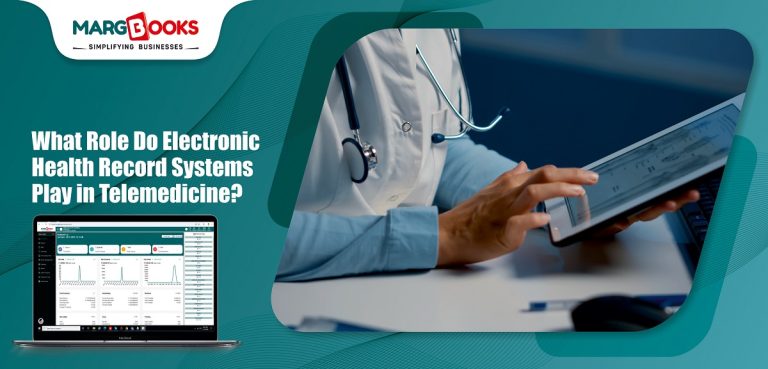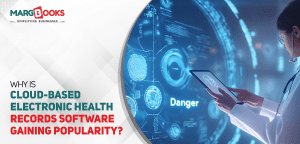Telemedicine ensures healthcare transformation through its development of remote patient consultations as well as virtual medical care methods. The key feature that enables remote consultations and virtual patient care is the electronic record system. These digital systems enable access to patient data at all times by healthcare professionals. These systems improve both the efficiency of healthcare delivery and accuracy levels and keep communication channels open between healthcare workers.
Electronic Health Record Systems serve as critical practices to handle patient documentation and provide quality health service in the growing virtual healthcare environment. We will examine each system through their features together with benefits along with selection guides in this article.
What is Electronic Health Record Systems?
Medical providers run Electronic Health Record Systems which serve as virtual repositories for patient healthcare data that accumulate throughout time. The health record contains vital clinical information, which includes diagnoses with given medicines alongside treatment plans combined with immunization dates for allergies, radiology images, and laboratory results. Patients experience improved care from these systems because they eliminate documentation work and maintain accurate health records.
Healthcare staff obtain patient data instantly through the record systems, which results in expedited and enhanced medical care. Digital access to patient records forms a core component in telemedicine practice because doctors use this systemic information to make healthcare decisions.
Features of Electronic Health Record Systems
The features within Electronic Health Record Systems make telemedicine operations possible. Such systems contain essential features that include the following characteristics:
1. Cloud-Based Accessibility
Such healthcare information systems enable providers to access patient records no matter which location they are working from. Real-time accessibility of patient information is essential in telemedicine practice for doctors to deliver proper diagnoses and treatments.
2. Automated Documentation
Patient data is entered and updated automatically through the software’s automated processes. The system maintains working efficiency by automating documentation while maintaining high record precision for health providers.
3. Secure Data Storage
Secure patient information gets safeguarded through encryption protocols and authentication methods that operate within these systems. Our pharmacy retail chain software secure storage protocols help healthcare organizations fulfill patient confidentiality requirements and meet all healthcare regulations.
4. Integrated Communication Tools
These systems provide both video conferencing features and messaging capabilities. Such communication tools allow healthcare professionals to work cooperatively with doctors, nurses, and specialists which improves patient care throughout telemedicine.
Benefits of Electronic Health Record Systems
Telemedicine benefits greatly from Electronic Health Record Systems because of their multiple advantages. The benefits are as follows:
1. Improved Efficiency
Our MargBooks software increases work efficiency through its paperless operations. Doctors obtain patient records in an instant, enabling quick decisions for treatment.
2. Increased Patient Care
Medical providers who access patient records online can diagnose diseases correctly through real-time data availability. Thus, patients obtain prompt suitable medical treatments that lead to better health results.
3. Better Coordination Among Providers
The systems facilitate the straightforward exchange of patient health records between medical practitioners. Our online pharmacy software allows healthcare providers to work together effectively because it reduces mistakes that stem from miscommunication.
4. Reduced Costs
The elimination of paperwork, together with administrative work through health record systems, enables organizations to lower their operational expenses. The systems save healthcare providers and their patients money by reducing both their test and procedure expenses.
How to Choose the Right Electronic Health Record Systems?
Organizations need to pick carefully among Electronic Health Record Systems to achieve successful telemedicine operations. The following four factors should be taken into account:
1. User-Friendly Interface
Look for a system that provides a user-friendly interface. Patient records become accessible for fast adjustment through a streamlined interface design that healthcare providers can operate without encountering issues.
2. Customization Options
The needs of different healthcare organizations diverge from one another. Seek out a system that enables customizable features that meet the requirements of your telemedicine practice.
3. Compliance & Security
Healthcare data needs to comply with HIPAA protection standards in the selected system. The protection of patient data depends on security elements that combine encryption with multi-factor authentication.
4. Integration with Other Tools
The platform needs to effortlessly connect with telemedicine platforms, along with billing software and other healthcare program applications. The system functions properly and increases operational speed as the outcome of these specifications.
Conclusion
The technology of Electronic Health Record Systems brings major change to telemedicine operations through their safe management systems which efficiently store and access patient records. These systems create better care for patients, improve team communication in healthcare, and decrease administrative tasks.
Healthcare delivery improves because healthcare providers select appropriate MargBooks software which blend perfectly with telemedicine practice methods. Modern medical practices need a dependable record system to benefit from the ongoing growth of virtual healthcare systems.


